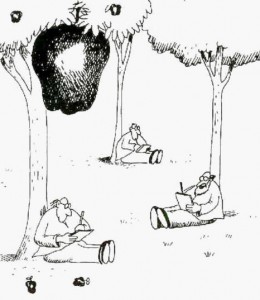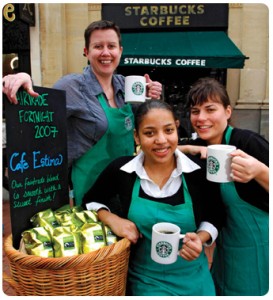Oh the irony.
For centuries, the bad business guy has perceivably won every encounter. He has manipulated and lied and under delivered and gotten away with it every time because we were all kept in the dark. With marketing on their side, we were lured into the spider’s web only to be caught in contracts, given poor service and saddled with products that didnt meet expectations. This was the natural way of things. We were prey, they were predators.
The good guy suffered, sometimes achieved great things, sometimes not. He suffered, not by his own hand, but because we had no trust anymore – a shared fate resulting from the bad guy’s destruction of consumer faith. And really, don’t all companies look and sound the same? Not anymore. Social Media has finally given the nice guys a way to prove themselves; a way to show through listening and action that they are indeed different and worthy like my beloved Starbucks.
I look at it as karmic revenge. Social Media has given nice guys the ultimate tool to win the hearts and minds of customers. It is an evolutionary cycle in the making between companies that only take and companies that give and take equally.
How would Darwin have seen it?
I think that the best example I could find was how Darwin looked at the selection of favourable traits over injurious traits. In new environments such as Social Media, old corporate traits like greed and not listening would be considered injurious; a factor that leads invariably to extinction. Whereas a trait such as listening and reacting (in a reasonable amount of time) is a favourable trait in Social Media; a factor that contributes to dominance in nature and the expansion of the species, or the brand as the case may be.
Is it possible to evolve or take on these favourable traits? Of course, but not many companies today can do it easily, if at all. To those nice guy companies though, Social Media has ushered in the dawning of a new era in business – an era where nice guys finish first.
How big does the apple have to be?
Now all we have to do as customers is wake up and get over our own self-limiting behaviour of being in abusive relationships to realize that there are nice guys out there who want to earn our business and not take advantage of us at every step. A company that will love us and hold us figuratively close.
What is the business equivalent of spooning anyway?
Ferociously,
Jeff – Sensei



